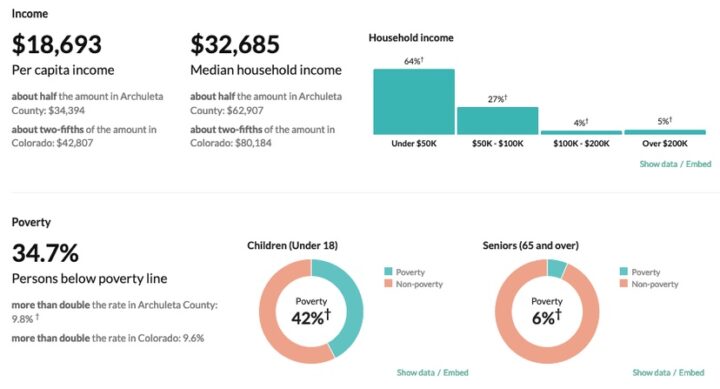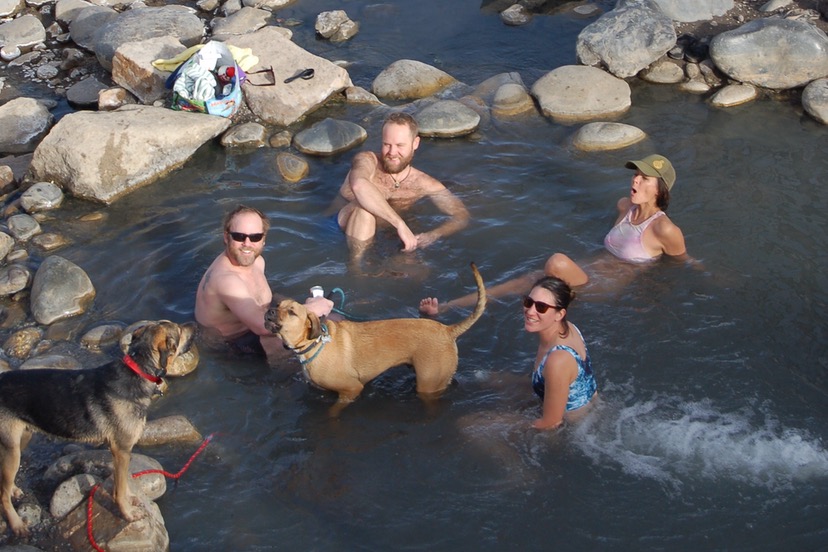I’ve written a number of editorials, over the past 20 years, about the geothermal water that provided Pagosa Springs with its Ute Indian name: Pagwöösa. Those editorials reflected my humble attempts to understand some of the complex issues created by a rural community’s use of an available natural resource, for fun and profit.
Unfortunately, a number of those early articles were lost when the Daily Post had its server hacked, a decade ago. So some of the information I’m sharing this week is based on whatever I can recall from years past. Please consider the source.
Other writers have discussed the purported benefits of mineral-rich geothermal water. For example, this, from The Springs Resort website:
Legend has it that the Utes were suffering a mysterious plague that was beyond the healing of the most powerful medicine men. After building a huge fire, praying, and dancing all night along the banks of the San Juan River, it is said that they awoke the next morning to a pool of boiling water where the fire once burned. And once bathed in the water, they were cured of their sickness.
The medicinal effects of the waters were studied and confirmed by U.S. Army physicians in the 1860s, concluding, “The waters of Pagosa are without doubt the most wonderful and beneficial in medicinal effects that have ever been discovered.” As the news spread and the area became more inhabited by the Army, railroad crews, and settlers, the first bathhouse was established in 1881, just four years after Pagosa was designated a township by the U.S. Government.
As rail travel reached Pagosa in 1900, travelers came from far and wide to “take the waters.” But with the advent of new advances in medicine, health seeking travel began to wane. Rail service to Pagosa ceased in 1936 and it wasn’t until the 1950s that “new motels” began to be erected for the driving public seeking the waters again.
One of those new motels in the 1950s, was the Spa Motel — now known as the Healing Waters Resortand located directly across the street from The Springs Resort and Spa. Unlike The Springs Resort — which is owned by a real estate investment trust called EPR Properties — the Healing Waters Resort has been owned since the 1950 by a local Pagosa family.
There’s another difference as well. The Springs Resort and Spa extracts a significant portion of its geothermal water from a municipally-owned well named PS-5. We’ll be discussing that lease in a moment. Across the street at the family-owned Healing Waters, the geothermal water comes from private wells on the motel property.
Both resorts ‘use’ the geothermal water for soaking pools and swimming pools, and also for heating purposes. The ‘used’ water is then recycled back into the San Juan River. The water from the Healing Waters exits through a white plastic pipe near the Hot Springs Boulevard Bridge, and locals and visitors have constructed makeshift pools known as the Hippie Dip, to take advantage of the warm water before it actually reaches the river.
Here’s an excerpt from YouTube video posted by massage therapist Brett Rodgers.
Back in 1977 — when a panicked America was seeking ways to enhance its energy security, following the OPEC-sponsored oil crisis — the federal government, in its wisdom, created a new bureaucracy called the Department of Energy (DOE). It wasn’t an entirely new bureaucracy, however, because it consolidated the Federal Energy Administration, the Energy Research and Development Administration, the Federal Power Commission, and programs of various other agencies.
The DOE began seeking new and better ways to spend federal tax revenues to promote energy conservation and develop alternative sources of energy, and geothermal energy was tossed around as a potential solution. That led to a multi-million dollar grant to the rural town of Pagosa Springs to develop a municipal heating system for its downtown businesses and residents. The Department of Energy and the municipal heating system engineers believed that Pagosa Springs homes and businesses could be heated less expensively using geothermal water, than using oil, gas, or electricity.
The first step involved drilling exploratory wells behind the Archuleta Courthouse, and then testing the effect of pumping hot water at a high rate out of the new PS-3 and PS-5 wells. The tests demonstrated that the handful of the geothermal wells in downtown Pagosa were all pulling from the same aquifer. What the tests didn’t determine was exactly how large the aquifer was, and whether it could be drained by aggressive extraction.
Nevertheless, on April 27, 1988, Water Judge A. H. Haas granted the Town of Pagosa Springs the right to extract geothermal water from the shared underground aquifer at a rate of 1 cubic foot per second, which is 450 gallons per minute.
Since the Colorado Constitution defines water as a publicly-owned resource, a water user desiring to protect and defend a particular water use must prove that the water can and will be used… and must specify the location at which the water will be diverted, the beneficial purpose to which it will be put, and where any unused water will be returned to the public water supply.
In the case of the Town’s new municipal heating system, the water could be extracted from either PS-3 or PS-5.
The beneficial use? “Municipal use associated with geothermal heating”.
We will be talking more about that beneficial use, tomorrow. But initially, the water flowed through a system of underground pipes to serve about three or four dozen businesses, schools and homes in the core downtown area. Eventually, the Town realized that the hydrogen sulfide and other chemicals in the water were corroding and clogging the pipes and heating equipment, and a new building, with a heat-exchanger, was constructed near the corner of South 5th Street and Highway 160, and plain warm water was run through the pipes.
The waste geothermal water was dumped into the San Juan River, according to the decreed water right.
Over time, the system’s infrastructure has deteriorated, and it’s not clear how much longer the system will remain viable without investing millions of dollars into improvements and maintenance.
But lately, members of the Town Council have been wondering if we’ve been failing to serve our downtown families to the best of our abilities.

Many of those downtown families, and in particular those with children, are living in poverty.
With the cost of living climbing higher with each passing day, why are we not providing low-cost heating to more of our Town taxpayers?
That question brings us back to The Springs Resort, and raises additional questions.

